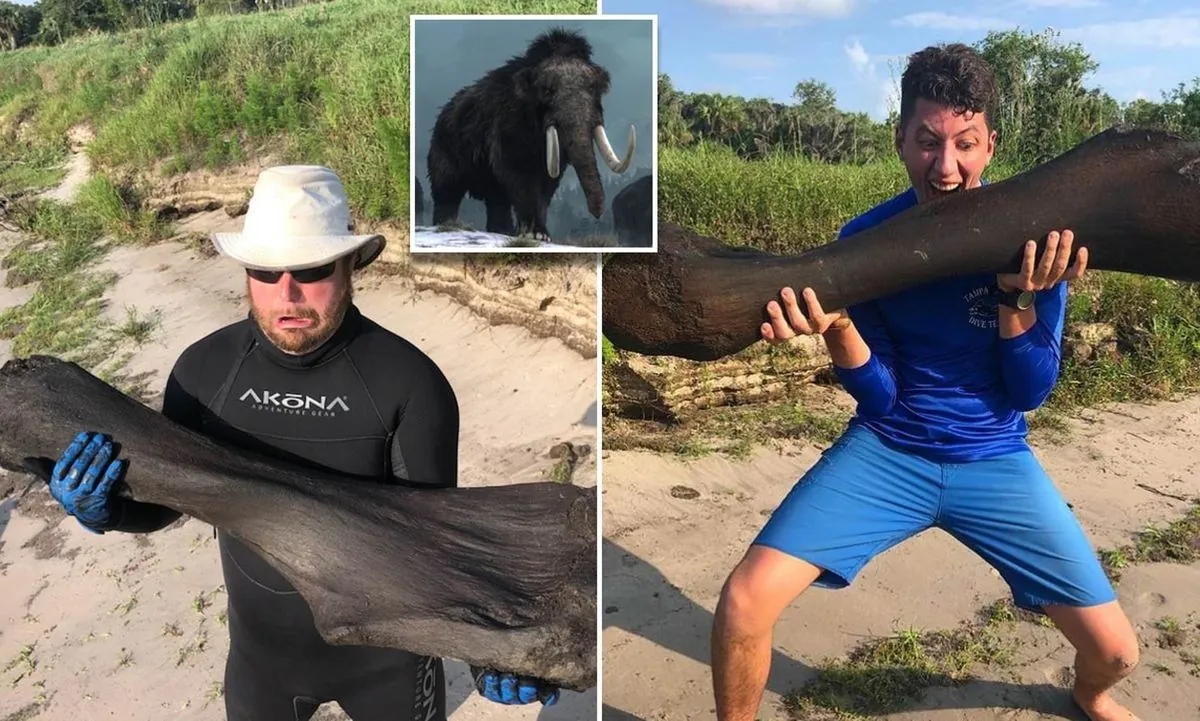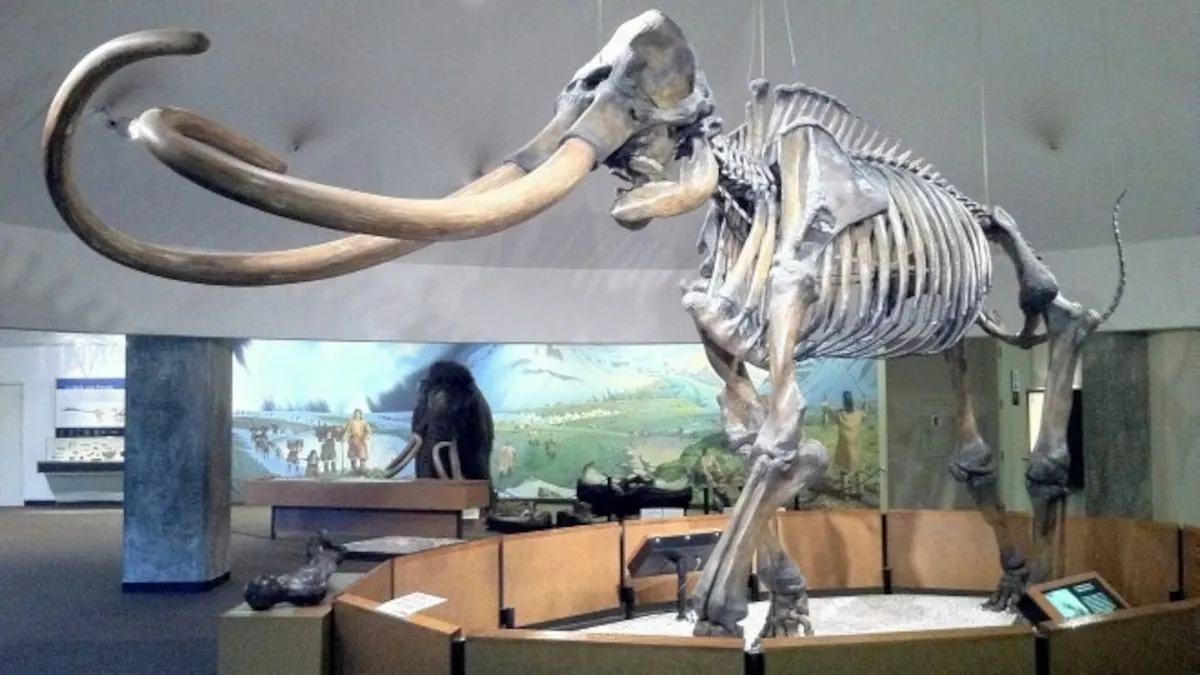Mississippi Man Unearths Rare 7-Foot Columbian Mammoth Tusk
A Mississippi fossil enthusiast has discovered an intact 7-foot Columbian mammoth tusk, marking the first such find in the state. The Ice Age relic is now undergoing preservation at a local museum.

In a remarkable discovery, Eddie Templeton, a 68-year-old fossil enthusiast from Madison, Mississippi, has unearthed a 7-foot-long tusk belonging to a Columbian mammoth. This find, made on August 3, 2024, represents the first intact mammoth fossil of its kind discovered in Mississippi, marking a significant moment in the state's paleontological history.
Templeton's lifelong passion for fossil hunting, which began with childhood excursions along local creeks, culminated in this extraordinary find. While wading in a river, he noticed an unusual object protruding from the mud. Recognizing its potential significance, Templeton promptly documented the discovery and contacted state scientists.
The importance of this find cannot be overstated. Columbian mammoths, which roamed North America during the Pleistocene epoch, were impressive creatures. These giants could reach heights of up to 14 feet at the shoulder, surpassing their woolly mammoth cousins in size. Their tusks, which grew in a spiral pattern, could extend up to 14 feet in length and were used for various purposes, including digging, foraging, and combat.

Geologists James Starnes and Jonathan Leard from the Mississippi Department of Environmental Quality promptly arrived at the site to assist with the excavation. The team carefully extracted the tusk, encased it in plaster, and transported it to the Mississippi Museum of Natural Science in Jackson for preservation.
The discovery of this tusk provides valuable insights into the Ice Age fauna of the region. During the Pleistocene, Mississippi's landscape was significantly different from today. Lower sea levels exposed a vast coastal plain that supported diverse megafauna, including mammoths, giant ground sloths, and saber-toothed cats.
George Phillips, lead paleontologist at the Mississippi Museum of Natural Science, explained the challenges of preserving the tusk. The fossil, which had split down the middle upon arrival at the museum, requires a meticulous restoration process. This includes drying, coating with resin, and filling larger cracks with adhesive.
The scientific community is eager to study this rare specimen. Kathlyn Smith, a paleontology professor at Georgia Southern University, highlighted the potential of the tusk to reveal information about mammoth growth rates, sexual dimorphism, diet, and habitat preferences.
While the tusk's long-term home is yet to be determined, it is expected to make a brief appearance at the museum's annual fossil event in March 2025. This display will offer the public a unique opportunity to witness a tangible piece of Mississippi's prehistoric past.
For Templeton, this discovery has reignited his passion for fossil hunting. He plans to return to the creek in search of additional mammoth remains, demonstrating the enduring allure of paleontology and the potential for further discoveries in Mississippi's rich geological landscape.
"I get excited over the smaller stuff, so this is huge. Most people don't realize these fossils are out there."
This remarkable find not only contributes to our understanding of Ice Age fauna but also highlights the importance of amateur fossil hunters in advancing paleontological knowledge. As scientists continue to study this rare specimen, it serves as a reminder of the fascinating prehistoric giants that once roamed the American landscape, and the secrets that still lie hidden beneath our feet.


































